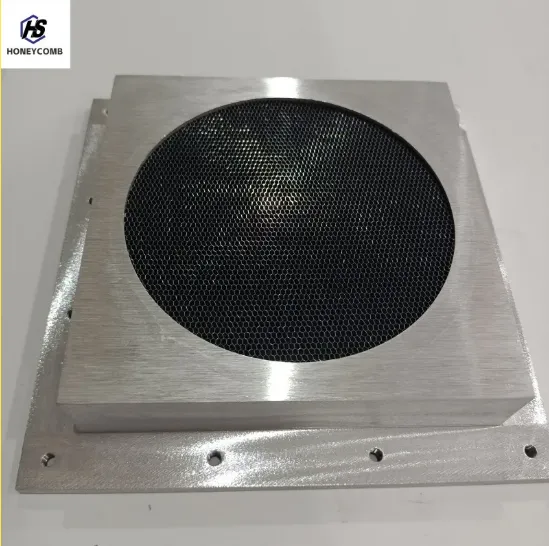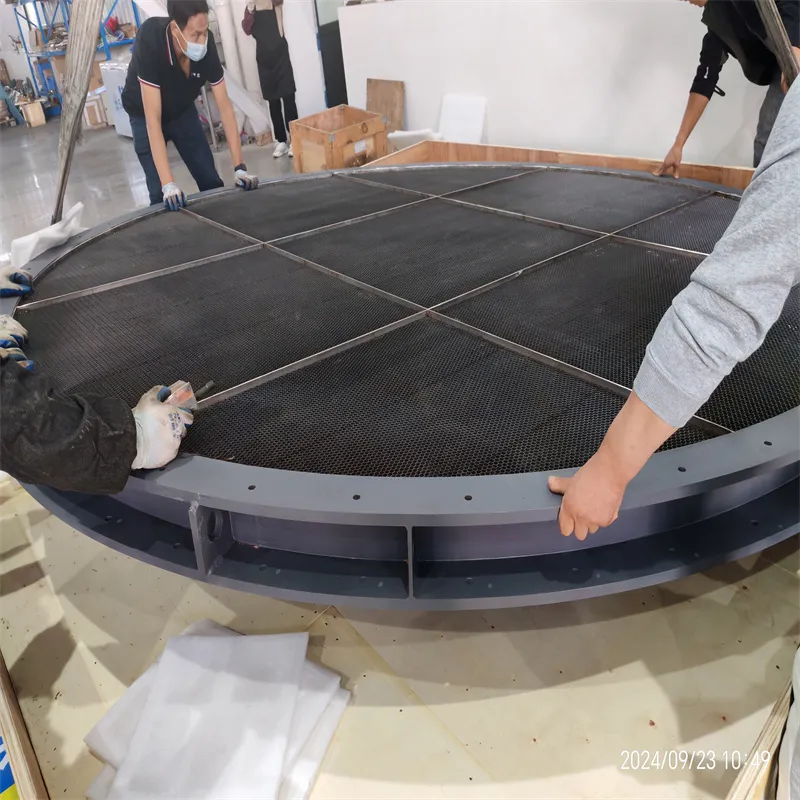
- Afrikaans
- Albanian
- Amharic
- Arabic
- Armenian
- Azerbaijani
- Basque
- Belarusian
- Bengali
- Bosnian
- Bulgarian
- Catalan
- Cebuano
- China
- China (Taiwan)
- Corsican
- Croatian
- Czech
- Danish
- Dutch
- English
- Esperanto
- Estonian
- Finnish
- French
- Frisian
- Galician
- Georgian
- German
- Greek
- Gujarati
- Haitian Creole
- hausa
- hawaiian
- Hebrew
- Hindi
- Miao
- Indonesian
- Italian
- Japanese
- Javanese
- Malay
- Persian
- Portuguese
- Punjabi
- Russian
- Spanish
- Swahili
- Telugu
- Vietnamese

Alloy Honeycomb Sheet - Custom Specs, High Strength & Affordable Manufacturer Solutions
- Introduction to alloy honeycomb sheet
and its increasing relevance in engineering and architecture - Key properties and technical advantages driving industry adoption
- Manufacturer benchmarking: Comprehensive cost, quality, and service comparison
- Custom honeycomb metal sheet specs: Options and design considerations
- Case studies: Real-world applications and their measured impact
- Sustainability, lifecycle, and maintenance of honeycomb metal sheets
- Conclusion: alloy honeycomb sheet in modern solutions and market trends

(alloy honeycomb sheet)
Introduction: The Role of Alloy Honeycomb Sheet in Modern Industry
The alloy honeycomb sheet has emerged as a transformative material in sectors ranging from construction to aerospace. Its exceptional blend of lightweight architecture and structural rigidity addresses persistent engineering dilemmas. According to a 2023 market analysis, global demand for honeycomb metal panels grew by 17% annually, with alloy-based variants making up nearly 40% of all sales. This growth stems from rising requirements for materials that support energy efficiency, durability, and design flexibility. Whether applied as façade panels, furniture cores, energy absorbers, or precision cooling modules, the alloy honeycomb sheet is recognized for reshaping traditional project boundaries. As new challenges and innovations arise, understanding the strengths and specifications of this material becomes essential for decision-makers across multiple industries.
Technical Attributes: Performance Metrics and Material Advantages
The distinct internal structure of honeycomb metal sheets delivers both impressive load-bearing capabilities and weight savings. The material’s efficiency is rooted in its geometric configuration, wherein a hexagonal matrix provides optimal strength-to-weight ratios. For instance, an aluminum alloy honeycomb sheet typically showcases densities as low as 2.7 g/cm³, with compressive strengths exceeding 0.8 MPa depending on the alloy series and cell dimensions. Table 1 details the comparative technical data for popular alloy compositions used in honeycomb structures.
| Alloy Type | Density (g/cm³) | Compressive Strength (MPa) | Thermal Conductivity (W/m·K) | Corrosion Resistance |
|---|---|---|---|---|
| Aluminum 3003 | 2.73 | 0.85 | 180 | Excellent |
| Stainless Steel 304 | 7.93 | 1.25 | 16.2 | Superior |
| Titanium Alloy Ti-6Al-4V | 4.43 | 1.80 | 6.7 | High |
| Copper Alloy C11000 | 8.96 | 1.00 | 401 | Moderate |
The data above demonstrates the tailorability of honeycomb metal sheets. Aluminum-based options deliver a high level of corrosion resistance and favorable weight savings for transportation and aerospace, while stainless steel provides exceptional mechanical performance for industrial and marine environments.
Manufacturer Benchmarking: Price, Quality, and Service Comparison
With increased utilization comes the need to identify reliable and cost-effective sources. The market features a spectrum of cheap honeycomb metal sheet manufacturer options alongside specialist, high-end producers. Careful evaluation reveals not only significant cost fluctuations but also variability in technical compliance and post-sale support. Table 2 compiles recent market findings, comparing manufacturers across several key performance indicators.
| Manufacturer | Average Price ($/m²) | Lead Time (weeks) | Customization Support | ISO Certification |
|---|---|---|---|---|
| Global Panel Tech | $52 | 3 | Yes | ISO 9001 |
| ValueCore Industries | $38 | 6 | Limited | ISO 14001 |
| Metal Matrix Solutions | $62 | 4 | Full | ISO 9001, ISO 14001 |
| BudgetPanel Co. | $29 | 8 | No | Not Certified |
These figures indicate that while affordable manufacturing is available, buyers should account for differences in technical assurances and responsiveness to specification adjustments. Selecting the right manufacturing partner is critical for both cost optimization and end-use suitability, especially for large-scale or safety-critical applications.
Customization Options: Tailoring Honeycomb Metal Sheet Specs to Project Demands
Custom honeycomb metal sheet specs are now essential to delivering competitive advantages on bespoke engineering and architectural projects. Core parameters open to customization include cell size, foil thickness, overall sheet dimensions, alloy grade, surface treatments, and core depth. For example, a transportation manufacturer may choose a 6mm cell with 0.05mm foil to maximize weight savings, while an architectural client requires anodized aluminum with decorative finishes for visual impact and weather resistance.
- Core and cell geometry: Standard hexagonal, rectangular, and custom shapes available
- Material options: Aluminum, stainless steel, titanium, copper, special alloys
- Surface treatments: Anodizing, powder coating, PVDF, anticorrosive primers
- Fire and smoke ratings: Class A (ASTM E84), EN 13501, NFPA 285 compliance possible
- Integration features: Pre-perforations, embedded fasteners, or integrated insulation
Collaboration between clients and solution providers drives continuous improvements in form, function, and cost efficiency. The increasing demand for tailored panels is visible in forecasts—up to 45% of all honeycomb metal sheet orders in the past year included non-standard specifications, highlighting the embrace of next-generation design requirements.
Case Studies: Applications & Performance Outcomes
Examining real-world deployments reveals the practical impact and outcomes of honeycomb metal sheets as both structural and finishing solutions. Below are concise case studies that demonstrate diverse and high-value applications:
1. Aerospace Cabin FloorsA global aerospace OEM transitioned from traditional plywood to aluminum 3003 honeycomb sheets for aircraft cabin modular floors. The result was a 56% reduction in component weight and an average fuel efficiency improvement of 1.2%. Durability testing demonstrated a 20-year lifecycle with minimal maintenance, and the modular nature allowed simplified installation and retrofitting.
2. Facade Cladding for High-Rise BuildingsIn 2021, a 62-story commercial tower in the United Kingdom utilized custom PVDF-coated stainless steel honeycomb sheets for its curtain wall. This enabled the use of 30% less primary structure, expedited the installation timeline by 20%, and enhanced resistance to wind and temperature cycling.
3. Energy Absorbing Barriers in Automotive RacingA motor racing circuit integrated titanium honeycomb energy-absorbing panels along impact zones. During simulated crashes (100 km/h velocity), panels absorbed 85% of collision force, reducing the need for subsequent barrier repairs and contributing to enhanced driver safety standards.
4. Cleanroom Raised FlooringSemiconductor manufacturing facilities adopted copper honeycomb core modules for raised access floors, leveraging superior thermal conductivity for static mitigation and precision climate control. Post-installation audits recorded a 35% improvement in static discharge tolerance and a further 10% decrease in cleanroom particulate contamination.
Each scenario underscores the versatility and performance-driven return on investment available with properly specified honeycomb metal solutions.
Sustainability, Lifecycle Value, and Maintenance Considerations
Environmental expectations and life cycle assessments are integral to contemporary material selection. Alloy honeycomb sheets, especially when sourced from certified manufacturers, support circular economy goals by offering high recyclability and minimized embodied energy. For example, over 75% of aluminum honeycomb panels are made from post-consumer recycled content, according to the International Aluminum Institute. The typical end-of-life recycling rate for stainless steel panels exceeds 95%.
Maintenance practices are equally favorable: routine surface cleaning and, depending on coating type, periodic inspections are usually sufficient. Total cost of ownership analyses regularly show that, despite higher upfront pricing for premium solutions, lifecycle cost can be up to 40% lower compared to conventional alternatives (such as solid sheets or composite woods) due to weight savings, low failure rates, and decreased labor.
Conclusion: Alloy Honeycomb Sheet and Future Market Directions
As explored, the alloy honeycomb sheet stands at the intersection of technology, design, and sustainability. Its adoption continues to broaden as manufacturers refine custom honeycomb metal sheet specs and align their offerings with a sweeping variety of market needs—from budget-driven projects to the most demanding architectural and engineering applications. The trend towards more affordable suppliers is met with a growing emphasis on quality, service assurance, and ecological responsibility. As construction, aerospace, and industrial product landscapes evolve, the honeycomb metal sheet is set to retain its position as a material of choice—enabling efficiency, safety, and aesthetic sophistication well into the future.

(alloy honeycomb sheet)
FAQS on alloy honeycomb sheet
Q: What is an alloy honeycomb sheet?
A: An alloy honeycomb sheet is a lightweight panel made from metal alloys and shaped in a hexagonal cell structure. This gives the sheet excellent strength-to-weight ratio. They are widely used in aerospace, construction, and automotive industries.Q: Can I order custom honeycomb metal sheet specs?
A: Yes, many manufacturers offer customization of honeycomb metal sheet specifications. You can specify material type, cell size, thickness, and dimensions. Contact the supplier for your exact requirements.Q: How can I find a cheap honeycomb metal sheet manufacturer?
A: Research online for manufacturers specializing in affordable honeycomb metal sheets. Compare quotes, bulk order discounts, and check for reviews. Always verify quality assurance before purchasing.Q: What are the benefits of using alloy honeycomb sheets?
A: Alloy honeycomb sheets are lightweight, durable, and provide high structural strength. They also offer good thermal and sound insulation. Their versatility suits many different industries.Q: What materials are commonly used in alloy honeycomb sheets?
A: The most common metals include aluminum alloys, stainless steel, and sometimes titanium. Each alloy offers unique benefits for specific applications. Material choice depends on strength, weight, and environmental needs.Products categories
-
Why Vented Aluminum Honeycomb Is Leading the Way in Shielding and Ventilation SolutionsNewsJul.18,2025
-
Why Stainless Steel Honeycomb Panel is the Ultimate Choice for High-Tech Shielding and ProtectionNewsJul.18,2025
-
Why Honeycomb Strips Are Revolutionizing High-Speed Sealing SolutionsNewsJul.18,2025
-
Shielded Glass Innovation Powers the Future of Electromagnetic ProtectionNewsJul.18,2025
-
Precision Starts Here: Revolutionizing Airflow Control with Honeycomb Wind Tunnel SolutionsNewsJul.18,2025
-
Elevate Industrial Performance with Precision-Engineered Steel Honeycomb Core SolutionsNewsJul.18,2025
-
Vented Aluminum Honeycomb: A Smart Shield for Airflow and EMI ControlNewsJul.11,2025















